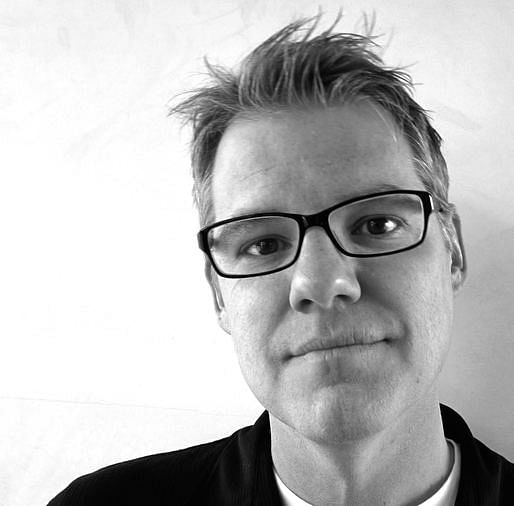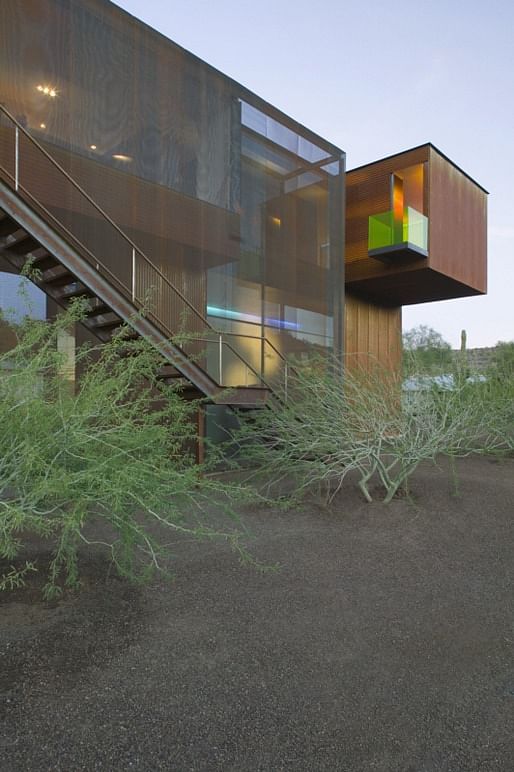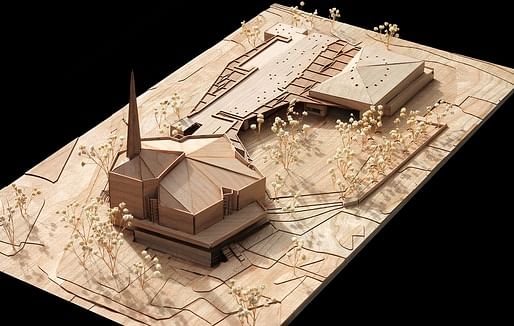

Last week, Modelo spoke with the founder ofblank studio design + architecture — Matthew Trzebiatowski. The firm, founded in 2006 is presently made up by four individuals and is based in Phoenix, Arizona. As a practicing architect, Matthew’s time is primarily focused on his business, but he also has the great pleasure of being a professor at the Frank Lloyd Wright School of Architecture at Taliesin as well as an Adjunct Lecturer at the University of Arizona.
On starting his firm:
I opted to start my firm when I did because I discovered an opportunity to refine my design sensibilities through my own personal projects, through which I could do more fully than with others’ work, and to contribute to the wider professional dialog. I worked for a number of years for several boutique offices and consciously avoided larger firms because I just understood clearly about myself that’s never what I was really about. Working in those studios prepared me for my path forward. I worked for people I respected. I essentially followed their path.
On being both an educator and a practicing architect:
Being an educator does affect the practice of course, how precisely I can’t say exactly. I most commonly define myself as an architect first and really became an educator more out of desire to again, like my mentors, be in a position to take on the kind of work that is special to me and not generally have to chase projects. That’s what education thankfully affords us, so there is an important balance in that way. The academy does also allow for a more focused, directed container in which to explore and expand on design topics that are not emerging in daily practice. It’s more a laboratory than the profession can often permit.
On the evolution of blank since its beginning in 2006:
How’s it changed? I think its focus has changed as the world has changed dramatically during that time. We swung our doors open right before things took a pretty nasty turn south in 2008. So I think there was a certain humility and resiliency that was forged during that period. Practice started out wonderfully with a nice, diverse array of work and it seemed like it was going to be a stable enough ride and then suddenly we were faced with the edge of a cliff. I began teaching more regularly, held onto that cliff tightly, worked on some smaller, varied projects and was able to get through the worst of that. Now we’re finally seeing things reset in many ways.

Xeros Residence, Phoenix Arizona (Photo by Bill Timmerman)
On the success of the Xeros residence:
The short answer is I don’t know precisely why it was so successful. In a very sincere way, it did many of the things we endeavor to accomplish in all of the work that we do, which is taking the expected and do unexpected things. We want to create things, spaces, and buildings that encourage you to take that second and third look . . . I am conscious of tuning proportions and relationships that can, at times, appear awkward. This encourages unexpected experiences. With Xeros I was exploring several avenues of inquiry, made it as flawlessly as I could manage, and presented it to the public. It just did very, very well — I was fortunate to get to live in it for several years. With it I started my studio; it was my business card, my office and my home. I felt the call to test ideas on myself first and I respected architects who did likewise, it’s certainly what my mentors did.
On the influences in his life as an architect:
I believe the primary thing that education instilled in me is a notion that you shall relentlessly ask questions and challenge assumptions — that is the essence of design to my mind and it is applicable to life beyond architecture. It’s asking questions over and over — often asking the same questions every time until the more appropriate ones emerge for the situation. I am most drawn to creative individuals who exhibit a very investigative quality about everything they do and are steeped in input from outside of their direct discipline or artform. For me it’s astrophysics and astronomy. I feel most anchored when I can follow the discoveries of the missions — it provides a sublime sense of context and it permits me to understand where I am within a cosmic context. For instance, the lakes and rain of methane discovered on Saturn’s moon, Titan, or the wispy offgassing of water vapor and ice from Jupiter’s moon Enceladus, — those things are endlessly fascinating to me. Additionally, the very essence of physics; things such as light, gravity, mass, density are the sorts of fundamental elements we compose with as architects and we can marshal them to enrich our daily experience.
On a phenomenological approach to design:
We each experience sensations uniquely, of certain, however an appreciation of the body’s sensory abilities and an avoidance of the synthetic or simulated are important to us. Considering the context of the cosmic elements just mentioned, we approach design with a distinct interest in phenomena. The search for authenticity, via material use and assembly for example, meshes with this phenomenal-based interest and creates the foundation for decision-making throughout a project.

Yoga Deva, Gilbert Arizona (Photo by Bill Timmerman)
On the differences between design intent and physical results:
There is always a difference between what we put our conscious thought into achieving and what ends up being created, but oftentimes we discover it’s better! For example, things like the unforeseen reflections of light in a certain space or the translation of color from one surface to another are things you try to simulate with software that will just never be able to be perfectly simulated. We want that experience to be much richer.
My professor once cautioned us about experiencing architecture through images rather than experiencing them first hand. We aim to create architecture that photographs beautifully but is even greater to experience in life!
On his dream project:
This is where we’re shifting I think — a small hospital or clinic, or certain elements of public infrastructure like cell towers, perhaps. When you are an architect, you are trained to be questioning and critical. For me, my daily existence is often punctuated with wondering if this thing or that building could be better or how could it be different. Or simply why is this the way it is? What factors or variables resulted to this outcome? I look at things and ask, if I had executed that project, how could I have taken it and navigated the design process through to a more successful, elegant, or refined result?

Landsnet Tower Competition, Iceland (Rendering by blank studio)
On where architecture will heading in the next 5–10 years:
This is likely less of a prediction but more of a desire that the pendulum is going to swing back in a way towards the authenticity of the analog. There is little question that we are going forward into a much more digitally enshrouded existence but I feel an unwavering, optimistic trust in digital technology is not advisable nor warranted. I rely on technology as much as anyone, however we’re now beginning to experience the fruits of an architecture that was conceived and made manifest more as a digital output rather than a purposeful, orchestrated composition and too often the quality of the experience is simply undesirable. I believe a kind of artistry and sensation has been stripped away and replaced with punch and impact — if everything is special, nothing is special.

Ascension Lutheran Church Expansion, Paradise Valley Arizona (Photo by Taylor Bellais)
On the future of blank design studio:
I would like to be surrounded by like-minded, inquisitive people — I think the term cooperative practice is closer to the definition than collaborative. When I’m at the academy, something I remind students is that you’re not a slave to software. One dissapointing shift I have witnessed over the past few years is a consistent reliance on the software. The drag-and-drop approach to design can be challenging to overcome but I want to thoughtfully curtail that. Use the tool when that tool is most effective, but only when and not until, it’s necessary.
At Modelo we want to know what drives the world’s design and architecture talent. This is why we invite select architects and designers to share their stories, philosophies, visions and favorite works with the public — their manifestos. For more information on how we're working to change the architecture and design world at Modelo please visit us at: www.modelo.io.
No Comments
Block this user
Are you sure you want to block this user and hide all related comments throughout the site?
Archinect
This is your first comment on Archinect. Your comment will be visible once approved.